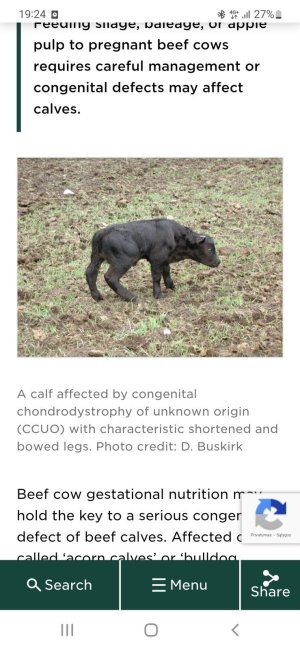lithuanian farmer
Well-known member
Anyone had experience with it, possible causes and possible solutions.
A friend of ours is dealing with what it looks like it this year. Probably the 7th calf from around 20 calves. Had a couple before as well, but it is too common this year.
I have my own guess, but would like to hear other people thoughts and experiences as we personally never had such issue in 20 years of farming.
From what I have read it might be manganese deficiency or antigonism, as there are some issues with cows fertility as well. They will take some blood samples from cows, but I also suggested to take some samples of their feed and soil.
A friend of ours is dealing with what it looks like it this year. Probably the 7th calf from around 20 calves. Had a couple before as well, but it is too common this year.
I have my own guess, but would like to hear other people thoughts and experiences as we personally never had such issue in 20 years of farming.
From what I have read it might be manganese deficiency or antigonism, as there are some issues with cows fertility as well. They will take some blood samples from cows, but I also suggested to take some samples of their feed and soil.


